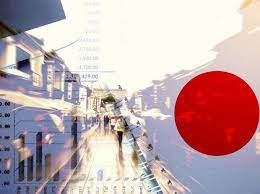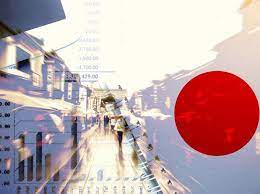
Following a slump in Japan's economy in the first three months of this year, there was an uptick in the second quarter at more than expected levels which provided economists with signs that consumption and capital expenditure in the country were recovering from the initial pandemic hit.
However, with authorities re-imposing state of emergency restrictions for preventing the spread of the pandemic, it weighed down on household spending which has prompted many analysts to forecast economic growth for the current quarter to remain modest.
In the April-June quarter, there was an annualised 1/3 per cent growth in the third largest economy of the world, showed preliminary gross domestic product (GDP) data on Monday which was higher than a median market forecast of a 0.7 per cent gain.
However, despite the better than expected quarterly growth, it was lower compared to the other advanced economies including the United States, which reported a 6.5 per cent annualised growth rate for the second quarter which reflected on the struggle for Japan to contain the pandemic.
"There's not much to be optimistic on the outlook with a spike in infections heightening the chance of stricter curbs on activity," said Yoshihiki Shinke, chief economist at Dai-ichi Life Research Institute.
"Japan's economy stagnated in the first half of this year and there's a risk of a contraction in July-September. Any clear rebound in growth will have to wait until year-end," he said.
The dilemma before the Japanese government was apparent because of the unexpected rebound in April-June consumption in terms of consumers becoming less responsive to the voluntary and repetitive stop-and-go orders to stay home.
"I have very mixed feelings about this GDP result. It shows that households' consumption appetite is very strong despite the state of emergency curbs," Economy Minister Yasutoshi Nishimura told reporters after the data's release.
"Our priority is to prevent the spread of the virus. It's very bad for the economy for this situation to drag on."
In the second quarter, there was a 0.8 per cent quarter on quarter rise in consumption which very comfortably beat market estimates of a 0.1 per cent decline and was a welcome sign for the economy when compared to a 1 per cent drop in the first quarter of the current year.
There was also a 1.7 per cent rise in capital expenditure during the latest completed quarter from a decline of 1.3 per cent in the previous quarter. That resulted in a contribution of 0.6 per cent of GDP by domestic demand.
Data showed a 2.9 per cent quarter on quarter growth in exports in the second quarter which signaled a continued recovery of the global economy and its positive impact on the third largest economy of the world. economy of the
"Private consumption grew unexpectedly and capital expenditure turned out to be firm. That said, the data left the impression that the economy's rebound from the first quarter slump was weak," said Takeshi Minami, chief economist at Norinchukin Research Institute.
(Source:www.channelnewsasia.com)
However, with authorities re-imposing state of emergency restrictions for preventing the spread of the pandemic, it weighed down on household spending which has prompted many analysts to forecast economic growth for the current quarter to remain modest.
In the April-June quarter, there was an annualised 1/3 per cent growth in the third largest economy of the world, showed preliminary gross domestic product (GDP) data on Monday which was higher than a median market forecast of a 0.7 per cent gain.
However, despite the better than expected quarterly growth, it was lower compared to the other advanced economies including the United States, which reported a 6.5 per cent annualised growth rate for the second quarter which reflected on the struggle for Japan to contain the pandemic.
"There's not much to be optimistic on the outlook with a spike in infections heightening the chance of stricter curbs on activity," said Yoshihiki Shinke, chief economist at Dai-ichi Life Research Institute.
"Japan's economy stagnated in the first half of this year and there's a risk of a contraction in July-September. Any clear rebound in growth will have to wait until year-end," he said.
The dilemma before the Japanese government was apparent because of the unexpected rebound in April-June consumption in terms of consumers becoming less responsive to the voluntary and repetitive stop-and-go orders to stay home.
"I have very mixed feelings about this GDP result. It shows that households' consumption appetite is very strong despite the state of emergency curbs," Economy Minister Yasutoshi Nishimura told reporters after the data's release.
"Our priority is to prevent the spread of the virus. It's very bad for the economy for this situation to drag on."
In the second quarter, there was a 0.8 per cent quarter on quarter rise in consumption which very comfortably beat market estimates of a 0.1 per cent decline and was a welcome sign for the economy when compared to a 1 per cent drop in the first quarter of the current year.
There was also a 1.7 per cent rise in capital expenditure during the latest completed quarter from a decline of 1.3 per cent in the previous quarter. That resulted in a contribution of 0.6 per cent of GDP by domestic demand.
Data showed a 2.9 per cent quarter on quarter growth in exports in the second quarter which signaled a continued recovery of the global economy and its positive impact on the third largest economy of the world. economy of the
"Private consumption grew unexpectedly and capital expenditure turned out to be firm. That said, the data left the impression that the economy's rebound from the first quarter slump was weak," said Takeshi Minami, chief economist at Norinchukin Research Institute.
(Source:www.channelnewsasia.com)





